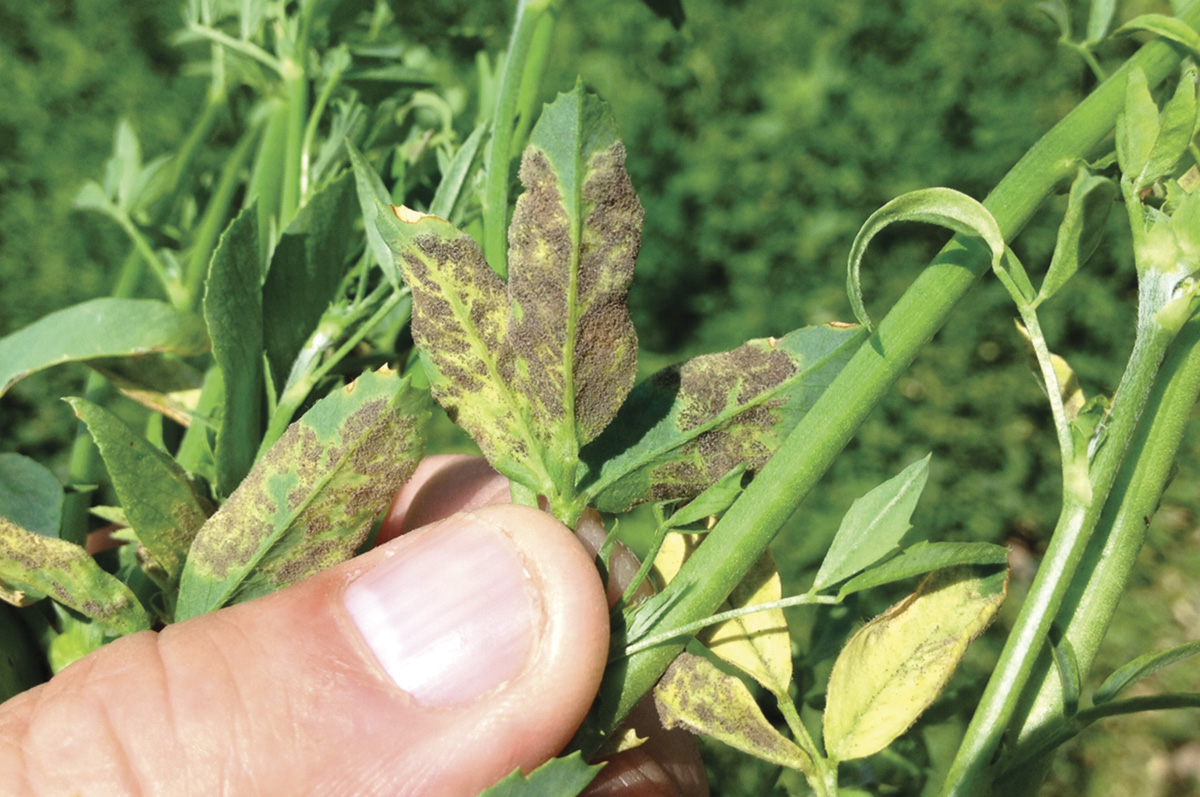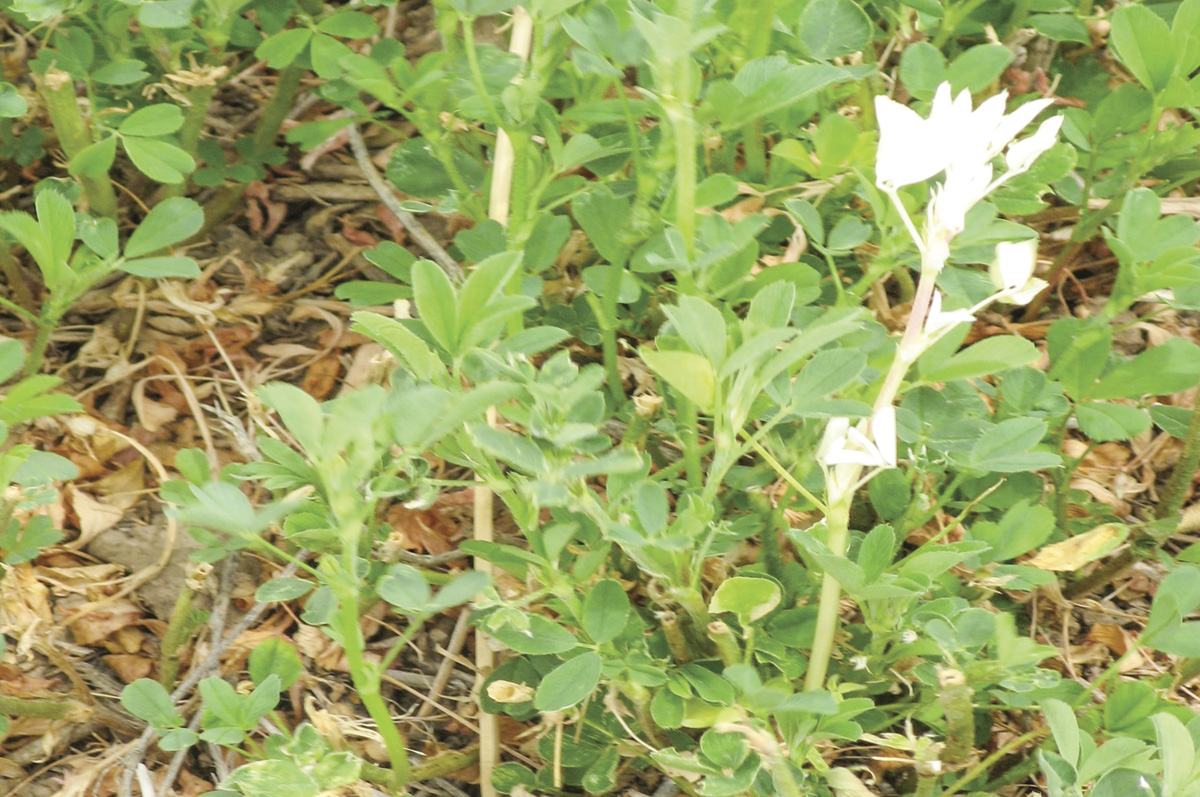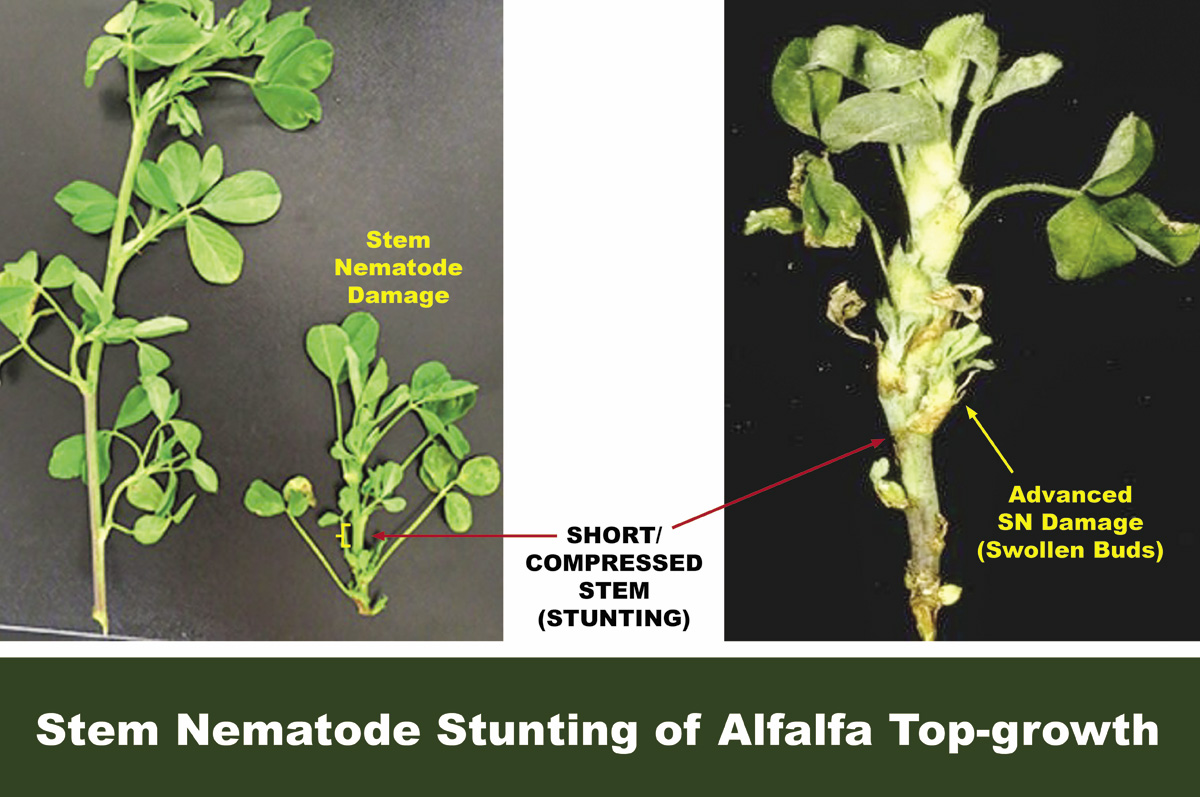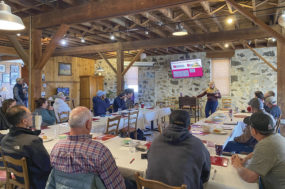Considering the severity of the recent Western drought, it’s difficult to suggest any potential problems associated with the much-needed wet weather we have had this winter and spring. However, the cool spring temperatures that are good for the snowpack, when combined with a wet spring, may present some potential problems for alfalfa stands.
Under those conditions, alfalfa foliage can remain wet or moist for extended periods, and this can result in an increase in alfalfa leaf diseases. Also, alfalfa stands that have a low-to-moderate stem nematode infestation may see a significant increase in the population. This may result in significantly more plant stunting, yield loss and, in some cases, major stand losses.
If these cool/wet conditions continue for an extended period this spring, alfalfa growers should be on the lookout for the following associated plant symptoms of leaf diseases and stem nematode damage.
Leaf diseases
Most spring foliar diseases are associated with cool, moist conditions and are generally considered minor production problems when compared to root diseases. Leaf diseases generally don’t result in plant death; however, if conditions are right, severe outbreaks can occur, resulting in yield losses due to leaf drop and/or a significant reduction in forage quality.
There are numerous alfalfa leaf diseases, and the occurrence can vary by region. The most common of these leaf diseases are spring black stem, common leaf spot and lepto leaf spot. However, downy mildew is probably the leaf disease that I get the most inquiries about each spring (Photo 1 below).

Downy mildew is pictured. Photo provided by Don Miller.
The actual identification of leaf diseases can be difficult for the untrained eye. However, most state extension websites have literature and photos to aid in the identification of alfalfa leaf diseases. This PDF also has photos and information on alfalfa diseases.
Management options
If leaf diseases are an economic concern, the following are some management options available to minimize potential yield and forage quality losses:
- Early harvest – In most cases, the impact of the leaf diseases can be minimized by harvesting early and removing the diseased forage as soon as possible to minimize the infection of new regrowth.
- Chemical control – There are several foliar fungicides on the market that can minimize losses; however, applications are generally only effective on individual cuts and must be sprayed early in the growth cycle before symptoms are present. When using currently registered fungicides in alfalfa, it is important to know they will not get rid of the existing pathogen damage, but they will protect the treated foliage from further disease infection. However, new foliage that grows after a fungicide application will not be protected, as the fungicides available for use in alfalfa are more contact based rather than systemic. Lower leaves tend to be most affected by diseases due to the higher humidity and prolonged moisture time low in the canopy, so good spray coverage of lower leaves is essential.
- Plant-resistant varieties – Use if available. However, these are currently very limited.
Fungicides can be costly, therefore it’s important to use the fungicides before a disease problem affects alfalfa yields and/or forage quality for maximum efficacy with minimal costs. The challenge will be deciding if the expense of a preventative spray application provides a cost-effective return on investment when the alfalfa is sold or fed.
Some of the current fungicides being used are:
- Headline (pyraclostrobin) – This fungicide is active against common diseases, such as downy mildew, common leaf spot, spring black stem (phoma), stemphyllium leafspot, cerospora and stagnospora leaf spot.
- Pristine (pyraclostrobin and boscalid) – This chemical also controls the above diseases, as well as sclerotinia stem and crown rot (“white mold”).
- Quadris (azoxystrobin) – Quadris is labeled against common diseases, such as downy mildew and cercospora leaf spot in alfalfa.
If a foliar fungicide is used, it may be beneficial to add foliar micronutrients as part of the spray package to get an added benefit. Producers should check with their local pesticide/chemical supplier to see what is currently registered for alfalfa in their area.
Stem nematode
The stem nematode is a microscopic parasitic roundworm that feeds on the alfalfa crown buds and lower stems. Prolonged cool spring temperatures and surface moisture on the lower leaves in the alfalfa plant canopy facilitate the ability of the stem nematode to penetrate and establish in the crown buds of the plant. If a stem nematode infestation is suspected, its presence can be confirmed by sending a soil and/or plant sample to a qualified testing lab.

Sporadic white stems or “white flags” are a symptom of stem nematode. Photo provided by Don Miller.
Some of the alfalfa symptoms associated with stem nematode include:
- In the spring or fall, sporadic white stems or “white flags” seen throughout the field (Photo 2 above)
- Stunting in a somewhat circular pattern in the field
- Swollen stem buds
- Shortened internodes and swollen nodes on lower stems (Photo 3 below)
- In advanced stages, a blackened lower stem
- Fewer symptoms during the summer months

Photo provided by Don Miller.
If stem nematode has been confirmed in your alfalfa field, the following are some management options available:
- Prevent spread to other alfalfa fields – Avoid moving contaminated farm machinery or livestock from infested to clean fields. Harvest nematode-free fields before infested fields. Clean equipment when moving from an infested to a clean field using a high-pressure washer or blower.
- Chemical control – No nematicides are currently registered for use against the alfalfa stem nematode once the alfalfa is planted. Several are being investigated.
- Use resistant varieties for future production – Growers who know they have this pest should plant highly resistant (HR) varieties. However, resistance is not immunity, and even the best HR varieties may become infected and develop symptoms during the years with extended periods of cool, wet conditions.
- Follow the suggested crop rotation for stem nematode control – Rotate alfalfa, followed by two years of a small-grain (non-host) crop, followed by a biofumigant crop (i.e., yellow mustard), followed by a new planting of an alfalfa variety with high resistance to stem nematode.
Summary
Cool, wet spring weather has the potential to increase alfalfa leaf diseases and stem nematode infestations. Grower awareness of these potential threats can facilitate their management practices and lessen the potential economic damage to existing and future alfalfa production.







